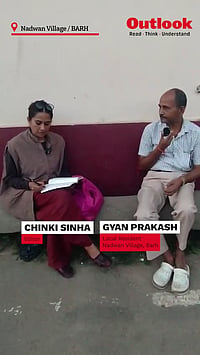There is an old lady I know, an old-fashioned dowager with one of India’s most distinguished names as her own, who is given to firm opinions, quietly expressed. One of them concerns newspapers. One evening she ranked them for me, in the order she liked them. The best known name was missing from the list. Why? I asked her with astonishment. “Too frivolous,” she said. I tried to argue that the frivolous bit was an add-on supplement, one that could even be discarded unread, while most of the paper was comprehensive without being voluminous, serious without being boring. To no avail. Her mind was made up, and nothing would change it. Is your mind made up too?
There is a general feeling that publications are now dominated by the three Fs: Food, Fashion and an unmentionable four-letter word which I will replace with a word reflecting the media’s prime obsession. So we get Food, Fashion and Follywood. It’s probably not as bad as it sounds. It’s worse. The F words. The frivolous words. The words that make people like the dowager lady consign perfectly good publications to the dustbin.
There is a double jeopardy here. The first is that the seeming domination of our publications by the F words results in a trivialisation of the whole industry. It’s made worse because this part of journalism has gradually come to be dominated by PR companies. This has meant a gradual decline in standards. And when you realise that those standards were pretty poor to start with, you are looking at rather abysmal levels.

Row At Front: Fashion shows have gone down in standard. Peer-inspired fluff overwhelms serious criticism.
The decline is on both sides: both in the reporting and the reported. Let’s take food. By general consensus in the food industry, two of the country’s best known writers know very little about food. What they lack in knowledge, they make up in gumption, so that their sheer persistence results in ever-expanding influence. This means that people in the food business (chefs, restaurant owners etc) realise they don’t necessarily have to be good to get good notices. What they need is good PR. If good PR gets you positive reviews and profiles, it is bound to result in a general shoddiness. Unless you are truly proud of your work, why would you spend long hours slaving away when time- and labour-saving shortcuts will get you equal (or more) praise?
Who gets shortchanged in this? Obviously, the customer. To start with, he gets to read reviews or profiles of restaurants or cuisines or chefs written by the ignorant and which are PR-inspired. Then he gets to eat cuisine which has been dished out (in a manner of speaking) and which isn’t half as good as it should be.
The same goes for fashion. Talk off-the-record to fashion experts, the ones with real knowledge and with no axes to grind (or to mix metaphors, no fingers in the pie). They will tell you that despite the saturation exposure that annual fashion weeks give to the fraternity, fashion shows have actually gone down in standard each year, year on year. They point to the example of a Calcutta-based designer who became a sensation on his debut a few years ago with his inspired creations. Five years on he is a Big Name, with a waiting list of clients for his clothes. No one says what they should: that he is a designer in steep decline, occasionally derivative, often lacklustre, sometimes shoddy, generally over the top. But does anyone care? There are serious fashion writers who know their subject. They do point out the obvious fall in levels, and do it as often as they can. But PR-inspired fluff about fashion shows with their splashy colour photographs and celebrity quotes overwhelms serious critical evaluation.
So it is with Follywood. It dominates the frivolous part of our news so completely that we are unable to see how many ‘stars’ who make news on a regular basis are famous only for being famous. Some of them have had movie careers which are only a couple of inconsequent films old, and that’s over a period of half a dozen years. So what’s the success of their spurious success? Why, the PR machine of course. There’s an actress who is in the news for: 1. Giving her grandma a fridge; 2. Twisting her ankle; 3. Having a fight with her parents; 4. Breaking up (again) with her boyfriend. Note that there is not a single item about acting, which is presumably what an actor is supposed to do. There’s also the PR-inspired phenomenon of ‘manufactured news’: Freida Pinto is to be in the next James Bond film. Freida Pinto denies she was ever to be in the next James Bond film. Since the denial comes three months after the first news item, you get maximum coverage out of nothing but manufactured news.
As it happens, these elements combine to do a real disservice to the media. Old-timers like the dowager lady hark back to a golden age of Indian media when news was serious, articles well-written, analysis thoughtful. The problem with this nostalgia is this: it is completely wrong. There never was a golden age of Indian media. Earlier, newspapers were boring, dominated so much by political news that even economic news fought to get space and human interest stories hardly ever got reported. And television was Doordarshan. Today’s newspapers and TV channels are far more engaging, forthright and relentless in their pursuit of chicanery and fraud. If ever there was a golden age of Indian media, it is now. We just don’t see it because the false glitter of the three Fs blinds us, and blinds us completely.






















